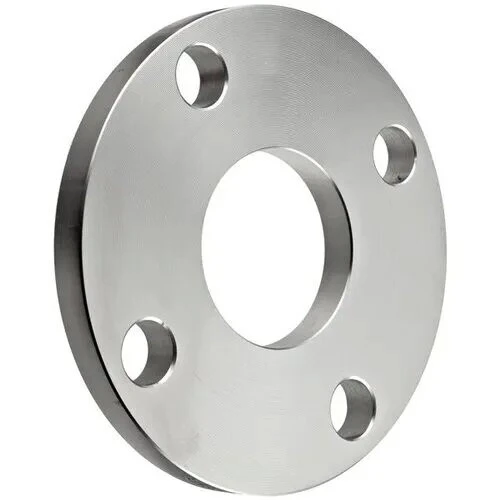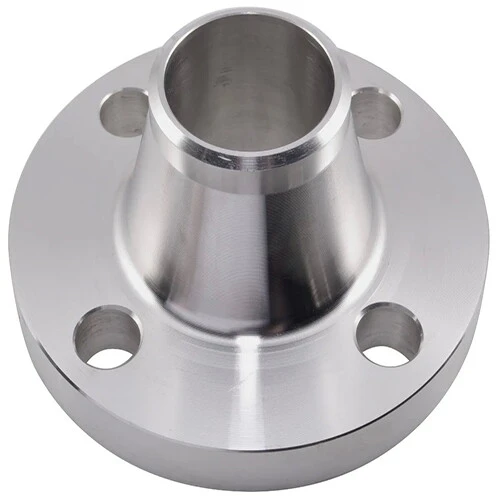Comparing Flat Welding Flanges and Weld Neck Flanges
In the world of pipeline connections, two main players stand out: the flat welding flange (also called the plate flange) and the weld neck flange. Knowing their features, uses, and structural disparities is vital for making informed decisions in different engineering situations. These flanges play crucial roles in pipeline systems, each with its own distinct characteristics and benefits. Let's explore them further to understand their importance in pipeline engineering.
Flat Welding Flange: Simple Structure and Key Features
The flat welding flange acts as a connector between containers or pipes through angular welding seams. When designing, engineers assess the connection integrity between the flange ring and the straight cylindrical section, categorizing them as either integral or loose flanges. Flange rings come in two variations: with or without necks. Compared to weld neck flanges, flat welding flanges offer a simpler structure, reduced material usage, though they may compromise on rigidity and sealing performance. These features make flat welding flanges suitable for connecting low to medium-pressure vessels and pipelines.

Weld Neck Flange: Robust Design and Versatile Application
Conversely, the weld neck flange boasts a neck, circular tube, and seamless integration with the pipeline. It offers superior resistance to deformation, excellent sealing capabilities, and versatile applications. Weld neck flanges feature the necessary rigidity and elasticity, incorporating a rational weld transition to minimize thinning. With intricate bell-shaped structures, they excel in pipelines facing significant pressure or temperature fluctuations, especially in extreme environments. These flanges are commonly used for connecting pipelines and valves with high pressure ratings and for transporting volatile or flammable media.

Distinguishing Features and Considerations
Now, let's delve into the differences between flat welding flanges and weld neck flanges:
1. Scope of Application: Flat welding flanges are widely used for low to medium-pressure carbon steel pipelines, while weld neck flanges shine in high-pressure and high-temperature applications, including the conveyance of costly or combustible media.
2. Welding Methods: Flat welding flanges require welding on one side only, eliminating the need for internal joints between the pipeline and the flange. In contrast, weld neck flanges require welding on both sides, reducing stress concentrations.
3. Pricing Differences: Due to their simpler manufacturing process, flat welding flanges are generally more cost-effective than weld neck flanges.
4. Structural Design: Weld neck flanges feature a complex bell-shaped structure, while flat welding flanges utilize gaskets and are crafted as circular rings with specific material strength and plastic deformation capability.
5. Structural Complexity: Flat welding flanges are less intricate in design, using fewer materials, but may not match the rigidity and sealing performance of weld neck flanges.
2. Welding Methods: Flat welding flanges require welding on one side only, eliminating the need for internal joints between the pipeline and the flange. In contrast, weld neck flanges require welding on both sides, reducing stress concentrations.
3. Pricing Differences: Due to their simpler manufacturing process, flat welding flanges are generally more cost-effective than weld neck flanges.
4. Structural Design: Weld neck flanges feature a complex bell-shaped structure, while flat welding flanges utilize gaskets and are crafted as circular rings with specific material strength and plastic deformation capability.
5. Structural Complexity: Flat welding flanges are less intricate in design, using fewer materials, but may not match the rigidity and sealing performance of weld neck flanges.
In conclusion, the choice between flat welding flanges and weld neck flanges depends on specific requirements and application contexts. While flat welding flanges offer cost-effective solutions for lower-pressure scenarios, weld neck flanges excel in high-pressure and high-temperature environments, ensuring optimal sealing and structural integrity. Informed decision-making is crucial for efficient and reliable equipment operation in engineering applications.
Related News
- Installation of Main Bolts for Lap Joint Flange in High-Temperature Gas-Cooled Reactors
- Structural Design and Finite Element Analysis of Anchor Flanges
- Key Welding Technology for High-Neck Flange and Steel Pipe Joints
- The Design and Calculation of Stamped Lap Joint Flanges
- Development of Manufacturing Large Anchor Flanges
- Hardfacing the Inner Surface of Long-Neck Flanges Using CO₂ Gas-Shielded Welding
- UHV High-Neck Flange Welding
- Application of High-Neck Flange to UHV Steel Pipe Tower
- Analysis of the Cracking Cause of High-Neck Flanges
- Anchor Flanges for the East-West Gas Transmission Project
